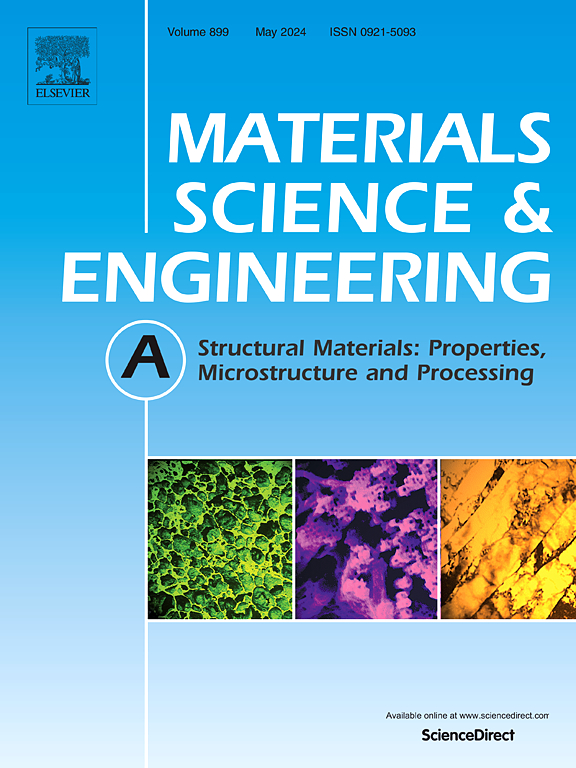Effect of annealing temperature on microstructure and mechanical properties of asymmetrically rolled unalloyed titanium ultra-thin strips
IF 6.1
2区 材料科学
Q1 MATERIALS SCIENCE, MULTIDISCIPLINARY
引用次数: 0
Abstract
By employing a high-tension asymmetrical rolling without intermediate annealing, unalloyed titanium ultrathin strips with a thickness of 0.03 mm for speaker diaphragms were prepared from an initial material thickness of 0.15 mm. The asymmetrical rolling process features strong rolling capability and excellent surface quality after rolling, effectively avoiding defects such as wrinkling and cracking. To enhance the mechanical properties of the unalloyed titanium ultrathin strips after asynchronous rolling, and thereby improve stiffness and strength-ductility product (which determine the high and mid-frequency sound performance of the diaphragm), annealing at different temperatures was conducted on the rolled unalloyed titanium ultrathin strips to investigate the effects on microstructure and mechanical properties. The study showed that when the annealing temperature was no more than 500 °C, the microstructural changes were primarily dominated by recovery and recrystallization nucleation and growth. When the annealing temperature reached 550 °C, the grains transformed into uniformly sized equiaxed grains, exhibiting excellent tensile strength (399 MPa), total elongation (20.1 %), and a strength-ductility product of 8.02 GPa·%. The best stamping performance and stiffness were achieved at this temperature, with a cupping value of 8.12 mm. The superior stiffness and strength-ductility product corresponded to balanced frequency response with regular amplitude variations in the mid-frequency range, providing good dynamic performance and warm, natural mid-frequency sound quality. As the frequency increased, the high-frequency signals responded more quickly. To avoid distortion, a smaller amplitude at 550 °C was selected. When the temperature exceeded 600 °C, the grains began to coarsen, and both the mechanical properties and stamping performance started to deteriorate.
求助全文
约1分钟内获得全文
求助全文
来源期刊

Materials Science and Engineering: A
工程技术-材料科学:综合
CiteScore
11.50
自引率
15.60%
发文量
1811
审稿时长
31 days
期刊介绍:
Materials Science and Engineering A provides an international medium for the publication of theoretical and experimental studies related to the load-bearing capacity of materials as influenced by their basic properties, processing history, microstructure and operating environment. Appropriate submissions to Materials Science and Engineering A should include scientific and/or engineering factors which affect the microstructure - strength relationships of materials and report the changes to mechanical behavior.
 求助内容:
求助内容: 应助结果提醒方式:
应助结果提醒方式:


